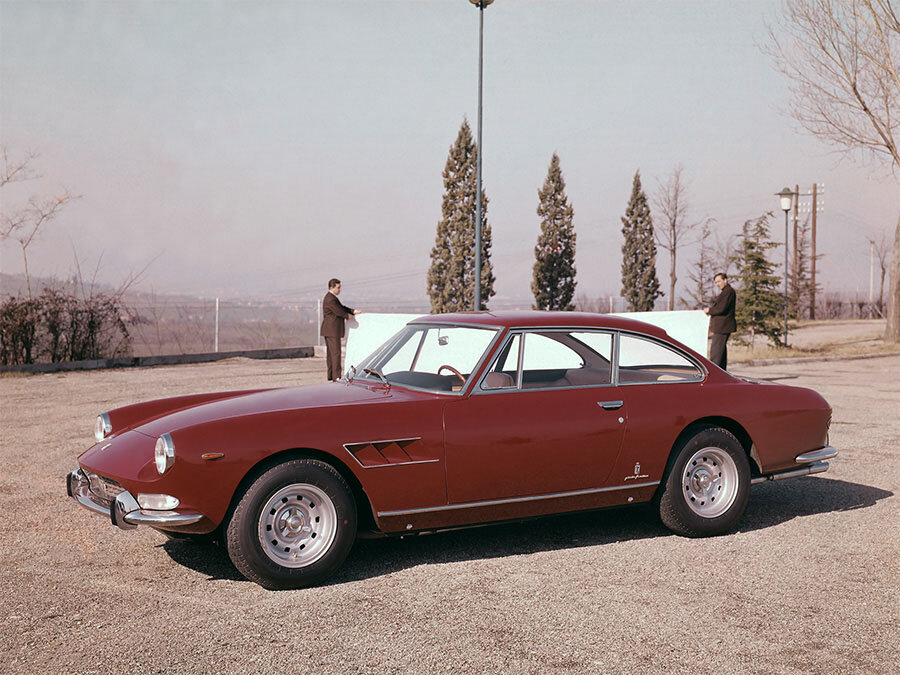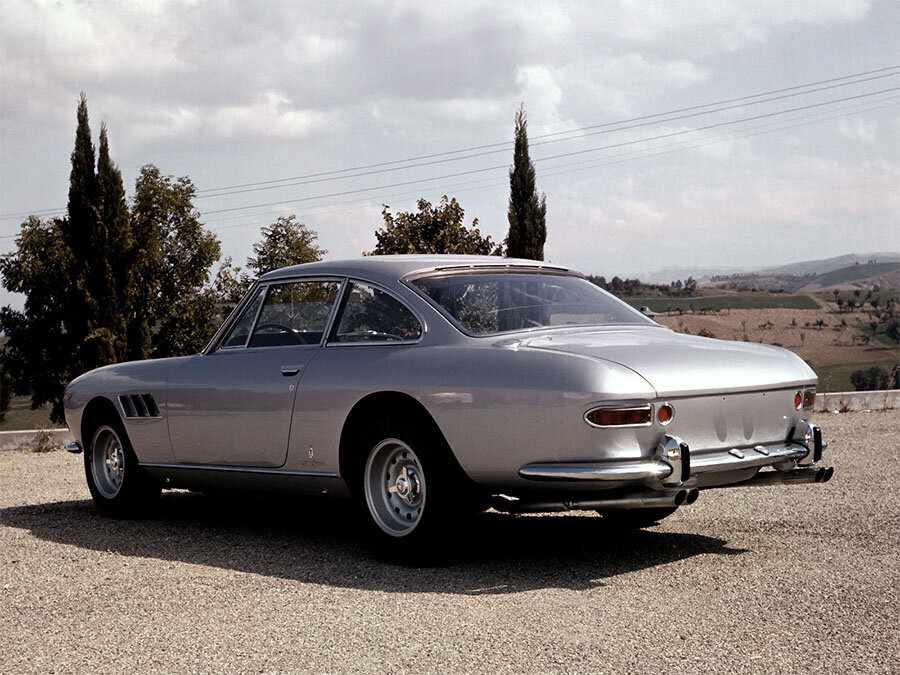Guide: Ferrari 330 GT Series 2 - a Historical & Technical Appraisal
/BACKGROUND
Launched in mid 1965, the second series 330 GT most notably saw the original four-headlight set up replaced with a more conventional two headlamp configuration.
Adopted by Pininfarina at the insistence of Enzo Ferrari, the four headlight 330 GT proved no less popular than the 250 GTE, but was produced for less than 18 months.
Part of the reason for the cosmetic update was to bring a cohesive family look to Ferrari's range. As a result, the second series 330 GT was equipped with a front-end that bore a remarkable resemblance to the recently introduced 275 GTS.
The 330 GT catered to customers who wanted the practicality of a four-seat layout. It slotted into a model line up that comprised a two-seat Berlinetta (the 275 GTB), a two-seat Convertible (the 275 GTS) and a low volume flagship Coupe (the 500 Superfast). Those customers who wanted to go GT racing could order a 275 GTB Clienti Competizione.
There were few serious rivals for a car like the 330 GT in 1965 and no other manufacturer offered a model with the same level of space and performance. Perhaps the 330 GT’s closest rival came from England in the shape of the handsome Aston Martin DB5. Domestic rivals Maserati and Lamborghini did not initially offer a like-for-like alternative.
The 330 GT remained Ferrari's best selling model until the autumn of 1967 when the new 365 GT arrived.
CHASSIS
From a technical perspective, no drastic changes were made.
The second series 330 GT was built around the same Tipo 571 tubular steel chassis as the original version. The wheelbase measured 2650mm.
Independent front suspension was via unequal length wishbones, coil springs, Koni telescopic shock absorbers and an anti-roll bar. At the back, Ferrari employed a live axle with twin radius arms, semi-elliptic springs and another pair of coil sprung Koni dampers.
Dunlop disc brakes were fitted all round and ran off a solitary Dunlop servo.
A 90-litre fuel tank fitted was fitted behind the rear seats.
New features included wider wheels (up from 6.5 x 15 to 7 x 15-inches). The Borrani wires that were standard on the Series 1 became an optional extra as Campagnolo cast alloy rims with a 10-hole design were made standard.
Also new were glassfibre mouldings for the floorpan and pedal boxes.
ENGINE / TRANSMISSION
Aside from a new air filter box and three-blade cooling fan, no changes were made to the Tipo 209 engine.
An evolution of Gioacchino Colombo's legendary short-block 60° V12, it displaced 3967cc thanks to a bore and stroke of 77mm and 71mm respectively.
The all-alloy power unit featured a single overhead camshaft per bank along with two valves per cylinder, wet-sump lubrication, single plug ignition and two coils.
Compression was 8.8:1 and three twin-choke Weber 40 DFI carburettors were installed.
Peak output was 300bhp at 6600rpm and 244lb-ft at 5000rpm.
A combination of four-speed with overdrive and five-speed gearboxes had been used in the first series 330 GT. For the Series 2, only five-speed units were employed.
Power was transmitted through a single-plate Borg & Beck hydraulic clutch and ZF limited-slip differential.
BODYWORK
The most obvious change to the second series 330 GT was its handsome new Pininfarina bodywork. It ditched the inverted four-headlight arrangement in favour of an entirely redesigned front clip that featured a 275 GTS-inspired nose.
The front wings were re-profiled and the original eleven-louvre engine vents located behind each front wheelarch were replaced by a cleaner triple-louvred extractor panel.
The majority of cars also came with new overrider bumpers but otherwise, little was changed.
INTERIOR
Inside, electric windows were fitted and the previously optional central control panel that joined the transmission tunnel and dash became standard. There were also some minor switchgear changes.
The main dash layout remained unchanged and the teak-veneered dash introduced with the series one variant was retained. Directly behind the three-spoke wood-rimmed steering wheel were large read outs for road and engine speed. Smaller gauges for oil pressure and oil temperature were located in between. Four additional instruments (water temperature, fuel, an ammeter and a clock) were housed centrally above the ventilation controls and a bank of rocker switches.
With refinement a key priority, the cockpit was beautifully finished and boasted a high level of equipment.
Full leather upholstery was standard and the heavily cushioned seats were perfect for long distance cruising.
Pininfarina’s elegant lines concealed the extraordinary amount of head and leg room back seat passengers were afforded: the 330 GT was a genuine four-seater with full-blooded Ferrari performance.
OPTIONS
Air-conditioning and power steering joined an options list that included a radio, head rests and Borrani wire wheels.
WEIGHT / PERFORMANCE
Weight was unchanged at 1380kg.
Top speed was a quoted 149mph and 0-62mph took a little under seven seconds.
PRODUCTION
Phased in during mid 1965, Series 2 production continued until the autumn of 1967.
460 examples were built of which 36 were right-hand drive.
It was replaced by the even larger 365 GT.
The most significant upgrade made during production was the switch from four to two engine mounting points. This came mid way through 1966 and cars equipped as such received engines designated as Tipo 209/66.
A solitary prototype was built on chassis 7353 GT.
Production VINs ranged from 7553 GT to 10193 GT.
Text copyright: Supercar Nostalgia
Photo copyright: Ferrari - https://www.ferrari.com

































